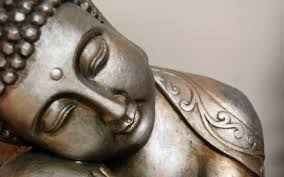 The danger of scholarship is always that, in extreme specialization, it may be unable to see the forest for the trees. But the problem of gaining some idea of the thought of India at the time of the Buddha, six centuries before Christ, is not to be solved by careful piece-work alone – necessary as this may be. There is, however, enough reliable information to suggest the grand and beautifully ordered form of Upanishadic Hinduism if we do not read it with our noses against the page.
The danger of scholarship is always that, in extreme specialization, it may be unable to see the forest for the trees. But the problem of gaining some idea of the thought of India at the time of the Buddha, six centuries before Christ, is not to be solved by careful piece-work alone – necessary as this may be. There is, however, enough reliable information to suggest the grand and beautifully ordered form of Upanishadic Hinduism if we do not read it with our noses against the page.
To the Western mind the puzzle of Indian philosophy is that it has so much to say about what the moksha experience is not, and little, or nothing about what it is. This is naturally bewildering, for if the experience is really without content, or if it is so lacking in relation to the things which we consider important, how is one to explain the immense esteem which it holds in the Indian scheme of life?
Indian philosophy concentrates on negation, on liberating the mind from concepts of truth. It proposes no idea, no description, of what is to fill the mind’s void because the idea would exclude the fact – somewhat as a picture of the sun on the windowpane would shut out the true sun’s light. Whereas the Hebrew would not permit an image of God in wood or stone, the Hindu will not permit an image of thought — unless it be so obviously mythological as not to be mistaken for the reality.
Therefore the practical discipline (sadhana) of the way of liberation is a progressive disentanglement of one’s Self (atman) from every identification. It is to realize that I am not this body, these sensations these feelings, these thoughts, these consciousness. The basic reality of my life is not my conceivable object. Ultimately it is not even to be identified with my idea, as of God or atman.
The atman is to our total consciousness what the head is to the sense of sight – neither light nor darkness, neither full nor empty, only an inconceivable beyond. In the moment when every last identification of the self with some object or concept has ceased, in the state called nirvikalpa or “without conception,” these flashes forth from its unknown depths the state of consciousness which is called divine, the knowledge of Brahman.
Translated into conventional and mytho-poetic language, the knowledge of Brahman is represented as the discovery that this world which seem to be many is in truth One, that “all is Brahman” and that “all duality is falsely imagined.” Taken as statements of fact, such utterances are logically meaningless and convey no information. Yet they seem to be the best possible expression in words of the experience itself, though it is as if in the moment of saying the “last word” the tongue were paralyzed by its own revelation, and compelled to babble nonsense or be silent.
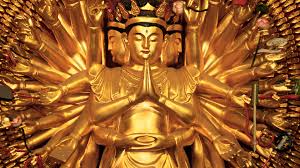 Moksha is also understood as liberation from maya – one of the most important words in Indian philosophy, Both Hindu, and Buddhist. For the manifold world of facts and events is said to be maya, ordinarily understood as an illusion which veils the one understanding reality of Brahman. This gives the impression that moksha is a state of consciousness in which the whole varied world of nature vanishes from sight, merged in a boundless ocean of vaguely luminous space. Such an impression should be dismissed at once, for it implies a duality, an incompatibility, between Brahman and maya which is against the whole principle of Upanishadic Philosophy. For Brahman is not One as opposed to Many, not simple as opposed to complex. Brahman is without duality (advaita), which is to say without any opposite since Brahman is not in any class or, for that matter, outside any class.
Moksha is also understood as liberation from maya – one of the most important words in Indian philosophy, Both Hindu, and Buddhist. For the manifold world of facts and events is said to be maya, ordinarily understood as an illusion which veils the one understanding reality of Brahman. This gives the impression that moksha is a state of consciousness in which the whole varied world of nature vanishes from sight, merged in a boundless ocean of vaguely luminous space. Such an impression should be dismissed at once, for it implies a duality, an incompatibility, between Brahman and maya which is against the whole principle of Upanishadic Philosophy. For Brahman is not One as opposed to Many, not simple as opposed to complex. Brahman is without duality (advaita), which is to say without any opposite since Brahman is not in any class or, for that matter, outside any class.
Now classification is precisely maya. The word is derived from the Sanskrit root matr-, “to measure, form, build, or lay out of plan”….To say then, that the world of facts and events is maya is to say that facts and events are terms of measurement rather than realities of nature. We must, however, expand the concept of measurement to include setting bounds of all kinds, whether by descriptive classification or selective screening. It will thus be easy to see that facts and events are as abstract as lines of latitude or as feet and inches. Consider for a moment that it is impossible to isolate a single fact, all by itself. Facts come in pairs at the very least, for a single body is in conceivable apart from a space in which it hangs. Definition, setting bounds, delineation – these are always acts of division and thus of duality, for as soon as a boundary is defined it has two sides.
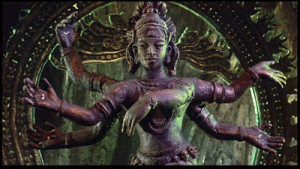 This point of view is somewhat startling, and even quite hard to understand for those long accustomed to think that things, facts, and events are the very building blocks of the world, the most solid of solid realities. Yet a proper understanding of the maya doctrine is one of the most essential prerequisites for the study of Hinduism and Buddhism, and in trying to grasp its meaning one must try to put aside the various “idealist” philosophies of the West with which it is so often confused – even by modern Indian Vedantists. For the world is not an illusion of the mind in the sense that – to the eyes of the liberated man (jivanmukta) – there is nothing to be seen but a trackless void. He sees the world that we see; but he does not mark it off, measure it, divide it in the same way. He does not look upon it as reality or concretely broken down into separate things and events. He sees that the skin may just as well be regarded as what joins us to our environment as what separates us from it.
This point of view is somewhat startling, and even quite hard to understand for those long accustomed to think that things, facts, and events are the very building blocks of the world, the most solid of solid realities. Yet a proper understanding of the maya doctrine is one of the most essential prerequisites for the study of Hinduism and Buddhism, and in trying to grasp its meaning one must try to put aside the various “idealist” philosophies of the West with which it is so often confused – even by modern Indian Vedantists. For the world is not an illusion of the mind in the sense that – to the eyes of the liberated man (jivanmukta) – there is nothing to be seen but a trackless void. He sees the world that we see; but he does not mark it off, measure it, divide it in the same way. He does not look upon it as reality or concretely broken down into separate things and events. He sees that the skin may just as well be regarded as what joins us to our environment as what separates us from it.
Thus this point of view is not monastic. He does not think that all things are in reality One because, concretely speaking, there never were any “things” to be considered One. To join is as much maya as to separate. For this reason both Hindus and Buddhists prefer to speak of reality as “nondual” rather than “One,” since the concept of one must always be in relation to the many. The doctrine of maya is therefore a doctrine of relativity. It is saying that things, facts, and events are delineated, not by nature, but by human description, and that the way in which we describe (or divide) them is relative to our varying points of view….The boundaries of events are conventional rather than natural, in the sense that a man’s life is said to have begun at the moment of parturition, rather than at the conception on the one hand or weaning on the other.
…Indian philosophy also thinks of rupa or form as maya because it is impermanent. Indeed, when Hindu and Buddhist texts speak of the “empty” or “illusory” character of the visible world of nature – as distinct from the conventional world of things – they refer precisely to the impermanence of its forms. Form is flux, and thus maya is the slightly extended sense that it cannot be firmly marked down or grasped. Form is maya when the mind attempts to comprehend and control it in the fixed categories of thought, that is, by means of names (nama) and words. For these are precisely the nouns and verbs by means of which the abstract and conceptual categories of things and events are designated.
To serve their purpose, names and terms must of necessity fixed and definite like all other units of measurement. But their use is – up to a point – so satisfactory that man is always in danger of confusing his measures with the world so measured, of identifying money with wealth, fixed convention with fluid reality. But to the degree that he identifies himself and his life with these rigid and hollow frames of definition, he condemns himself to the perpetual frustration of one trying to catch water in a sieve. Thus Indian philosophy speaks constantly of the unwisdom of pursuing things, of striving for the permanence of particular entities and events, because it sees in all this nothing more than an infatuation with ghosts, with the abstract measures of the mind (manas).
 Maya is, then, usually equated nama-rupa or “name-and-form,” which the minds attempts to grasp the fluid form of nature in its mesh of fixed classes. But when it is understood that form is ultimately void – in the special sense of ungraspable and immeasurable – the world of form is immediately seen as Brahman rather than maya. The formal world becomes the real world in the moment when it is no longer clutched, in the moment when its changeful fluidity is no longer resisted. Hence it is the very transitoriness of the world which is the sign of divinity, of its actual identity with the invisible and immeasurable infinity of Brahman.
Maya is, then, usually equated nama-rupa or “name-and-form,” which the minds attempts to grasp the fluid form of nature in its mesh of fixed classes. But when it is understood that form is ultimately void – in the special sense of ungraspable and immeasurable – the world of form is immediately seen as Brahman rather than maya. The formal world becomes the real world in the moment when it is no longer clutched, in the moment when its changeful fluidity is no longer resisted. Hence it is the very transitoriness of the world which is the sign of divinity, of its actual identity with the invisible and immeasurable infinity of Brahman.
This is why the Hindu-Buddhist insistence on the impermanence of the world is not the pessimistic and nihilistic doctrine which Western critics normally suppose it to be. Transitoriness is depressing only to the mind which insists upon trying to grasp. But to the mind which lets go and moves with the flow of change, which becomes in Zen Buddhist imagery, like a ball in a mountain stream, the sense of transience or emptiness becomes a kind of ecstasy. This is perhaps why, in both East and West, impermanence is so often the theme of the most profound and moving poetry.
In sum, then, the maya doctrine points out, firstly, the impossibility of grasping the actual world in the mind’s net of words and concepts, and, secondly, the fluid character of those very forms which thought attempts to define. The world of facts and events is altogether nama, abstract names, and rupa, fluid form. It escapes both the comprehension of the philosopher and the grasp of pleasure seeker like water from a clutching fist. There is even something deceptive in the idea of Brahman as the eternal reality underlying the flux, and of the atman {self} as the divine ground of human consciousness, for in so far as these are concepts they are as incapable of grasping the real as any other.
It is precisely this realization of the total elusiveness of the world which lies at the root of Buddhism. This is the special shift of emphasis which, more than anything else, distinguishes the doctrine of the Buddha from the teachings of Upanishads, which is the raison d’etre for the growth of Buddhism as a distinct movement in Indian life and thought.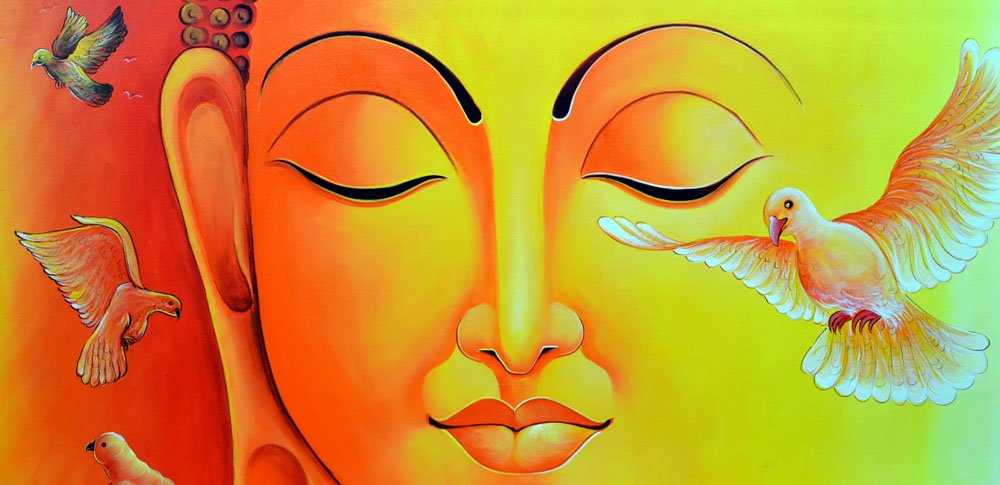
For Gautama the “Awakened One” or Buddha (died c. 545 B.C.) lived at a time when the major Upanishads were already in existence, and their philosophy must be seen as the point of departure for his own teaching. It would be a serious mistake, however, to look upon Buddha as the “founder” or “reformer” of a religion which came into being as some kind of organized revolt against Hinduism. For we are speaking of a time when there was no consciousness of “religions” when such terms as “Hindu-ism” or “Brahman-ism” would have meant nothing. There was simply a tradition, embodied in the orally transmitted doctrine of Vedas and Upanishads, in that it involved a whole way of life and concerned everything from the methods of agriculture to the knowledge of ultimate reality. The Buddha was acting in full accord with this tradition when he became a rishi or “forest sage,” who had abandoned the life of the householder and divested himself of caste in order to follow a way of liberation. As with every other rishi, the method of his way of liberation had certain characteristic features, and his doctrine contain criticisms of men’s failure to practice the tradition which they professed.
Furthermore, he was being entirely traditional in his abandonment of caste and in accepting a following of casteless and homeless students. For the Indian tradition, even more than the Chinese, specifically encourages the abandonment of the conventional life at a certain age, after the duties of family and citizenship have been fulfilled. Relinquishment of caste is the outward and visible sign of the realization that one’s true state is “unclassified,” that one’s role or person is simply conventional, and that one’s true nature is “no-thing” and “no-body.”
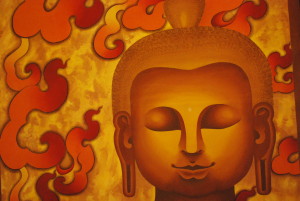 This realization was the crux of the Buddha’s experience of awakening (Bodhi) which dawned one night as he sat under the celebrated Bo Tree at Gaya, after seven years of meditation in the forests. From the standpoint of Zen, this experience is the essential content of Buddhism, and the verbal doctrine is quite secondary to the wordless transmission of the experience itself from generation to generation. For seven years Gautama had struggled by the traditional means of yoga and tapas, contemplation and ascesis, to penetrate the cause of man’s enslavement to maya, to find release from the vicious circle of clinging-to-life which is like trying to make the hand grasp itself. All his efforts had been in vain. The eternal atman, the real Self, was not to be found. However, much he concentrated upon his own mind to find its root and ground, he found only his own effort to concentration. The evening before his awakening he simply “gave up,” relaxed his ascetic diet, and ate some nourishing food.
This realization was the crux of the Buddha’s experience of awakening (Bodhi) which dawned one night as he sat under the celebrated Bo Tree at Gaya, after seven years of meditation in the forests. From the standpoint of Zen, this experience is the essential content of Buddhism, and the verbal doctrine is quite secondary to the wordless transmission of the experience itself from generation to generation. For seven years Gautama had struggled by the traditional means of yoga and tapas, contemplation and ascesis, to penetrate the cause of man’s enslavement to maya, to find release from the vicious circle of clinging-to-life which is like trying to make the hand grasp itself. All his efforts had been in vain. The eternal atman, the real Self, was not to be found. However, much he concentrated upon his own mind to find its root and ground, he found only his own effort to concentration. The evening before his awakening he simply “gave up,” relaxed his ascetic diet, and ate some nourishing food.
Thereupon he felt at once that a profound change was coming over him. He sat beneath the tree, vowing never to rise until he had attained the supreme awakening, and – according to a tradition – sat all through the night until the first glimpse of the morning star suddenly provoked a state of perfect clarity and understanding. This was “unexcelled, complete awakening,” liberation from maya and from everlasting Round of birth-and-death, which goes on and on for as long as a man tries in any way whatsoever to grasp at his own life.
Yet the actual content of this experience was never and could never be put into words. For words are the frames of maya, the meshes of its net, and the experience is of the water which slips through. Thus so far as words are concerned the most that may be said of this experience are the words attributed to the Buddha in the Vajracchekika:
Just so, Subhuti, I obtained not the least of thing from unexcelled, complete awakening, and for this very reason it is called “unexcelled complete awakening.”
Thus from the standpoint of Zen the Buddha “never said a word,” despite the volumes of scriptures attributed to him. For his real message remained always unspoken, and was such that, when words attempted to express it, they made it seem as if it were nothing at all. Yet it is the essential tradition of Zen that what cannot be conveyed by speech can nevertheless be passed on by “direct pointing,” by some nonverbal means of communication without which the Buddhist experience could never have been handed down to future generations.
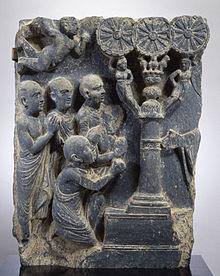 In its own (probably rather late) tradition, Zen maintains that the Buddha transmitted awakening to his chief disciple, Mahakasyapa, by holding up a flower and remaining silent. The Pali Canon, however, relates that immediately after his awakening the Buddha went to the Deer Park at Benares and set forth the doctrine to those who had formerly been his companions in the ascetic life, expressing it in the form of those Four Noble Truths which provide so convenient a summary of Buddhism. These Four Truths are patterned on the traditional Vedic form of a physician’s diagnosis and prescription: the identification of the disease, and of its cause, the pronouncement as to whether it may be cured, and the prescription for the remedy.
In its own (probably rather late) tradition, Zen maintains that the Buddha transmitted awakening to his chief disciple, Mahakasyapa, by holding up a flower and remaining silent. The Pali Canon, however, relates that immediately after his awakening the Buddha went to the Deer Park at Benares and set forth the doctrine to those who had formerly been his companions in the ascetic life, expressing it in the form of those Four Noble Truths which provide so convenient a summary of Buddhism. These Four Truths are patterned on the traditional Vedic form of a physician’s diagnosis and prescription: the identification of the disease, and of its cause, the pronouncement as to whether it may be cured, and the prescription for the remedy.
The First Truth is concerned with the problematic word dukkha, loosely translated as “suffering,” and which designated the great disease of the world for which the Buddha’s method (dharma) is the cure.
Birth is dukkha, decay is dukkha, sickness is dukkha, death is dukkha, so also are sorrow and grief….To be bound with things which we dislike, and to be parted from things which we like, these also are dukkha. Not to get what one desires, this also is dukkha. In a word, this body, this fivefold aggregation based on clutching (trishna), this is dukkha.
This, however, cannot quite be compressed into the sweeping assertion that “life is suffering.” The point is rather that life as we usually live it is suffering – or, more exactly, is bedeviled by the peculiar frustration which comes from attempting the impossible. Perhaps, then, “frustration” is the best equivalent for dukkha, even though the word is the simple antonym of sukha, which means “pleasant” or “sweet.”
 In another formulation of the Buddha’s teaching dukkha is one of the three characteristics of being, or becoming (bhava), whereof the other two are anitya, impermanence, and anatman, absence of any self. These two terms are of basic importance. The anitya doctrine is, again, not quite the simple assertion that the world is impermanent, but rather that the more one grasps at the world, the more it changes. Reality in itself is neither permanent nor impermanent; it cannot be categorized. But when one tries to hold on to it, change is everywhere apparent, since, like one’s own shadow, the faster one pursues it, the faster it flees.
In another formulation of the Buddha’s teaching dukkha is one of the three characteristics of being, or becoming (bhava), whereof the other two are anitya, impermanence, and anatman, absence of any self. These two terms are of basic importance. The anitya doctrine is, again, not quite the simple assertion that the world is impermanent, but rather that the more one grasps at the world, the more it changes. Reality in itself is neither permanent nor impermanent; it cannot be categorized. But when one tries to hold on to it, change is everywhere apparent, since, like one’s own shadow, the faster one pursues it, the faster it flees.
In the same way, the anatman doctrine is not quite the bald assertion that there is no real Self (atman) at the basis of our consciousness. The point is rather that there is no Self, or basic reality, which may be grasped, either by direct experience or by concepts. Apparently the Buddha felt that the doctrine of atman in the Upanishads lent itself too easily to a fatal misinterpretation. It became an object of belief, a desideratum, a goal to be reached, something to which the mind could cling as its one final abode of safety in the flux of life. The Buddha’s view was that a Self so grasped was no longer the true Self, but only one more of innumerable forms of maya. Thus anatman might be expressed in the form, “The true Self is non-Self, since any attempt to conceive the Self, believe in the Self, or seek for the Self immediately thrusts it away.
The Upanishads distinguish between atman, the true, supernatural Self, and the jivatman or individual Self, and the Buddha’s anatman doctrine agrees with them in denying the reality of the latter.it is fundamental to every school of Buddhism that there is no ego, no enduring entity which is the constant subject of our changing experiences. For the ego exists in an abstract sense alone, being an abstraction from memory, somewhat like the illusory circle of fire made by a whirling torch. We can, for example, imagine the path of a bird through the sky as a distinct line which it has taken. But this line is as abstract as a line of latitude. In concrete reality, the bird left no line, and, similarly, the past from which our ego is abstracted has entirely disappeared. Thus any attempt to cling to the ego or to make it an effective source of action is doomed to frustration.
 The Second Noble Truth relates to the cause of frustration, which is said to be trishna, clinging or grasping, based on avidya, which is ignorance or unconsciousness. Now avidya is the formal opposite of awakening. It is the state of the mind when hypnotized or spellbound by maya, so that it mistakes the abstract world of things and events for the concrete world of reality. At a still deeper level it is lack of self-knowledge, lack of the realization that all grasping turns out to be the futile effort to grasp oneself, or rather, to make life catch hold of itself. For to one who has self-knowledge, there is no duality between himself and the external world. Avidya is “ignoring” the fact that subject and object are rational, like the two sides of a coin, so that when one pursues, the other retreats. This is why the egocentric attempt to dominate the world, to bring as much of the world as possible under the control of the ego, has only to proceed for a little while before it raise the difficulty of the ego’s controlling itself.
The Second Noble Truth relates to the cause of frustration, which is said to be trishna, clinging or grasping, based on avidya, which is ignorance or unconsciousness. Now avidya is the formal opposite of awakening. It is the state of the mind when hypnotized or spellbound by maya, so that it mistakes the abstract world of things and events for the concrete world of reality. At a still deeper level it is lack of self-knowledge, lack of the realization that all grasping turns out to be the futile effort to grasp oneself, or rather, to make life catch hold of itself. For to one who has self-knowledge, there is no duality between himself and the external world. Avidya is “ignoring” the fact that subject and object are rational, like the two sides of a coin, so that when one pursues, the other retreats. This is why the egocentric attempt to dominate the world, to bring as much of the world as possible under the control of the ego, has only to proceed for a little while before it raise the difficulty of the ego’s controlling itself.
This is really a simple problem of what now call cybernetics, the science of control. Mechanically and logically it is easy to see that any system approaching perfect self-control is also approaching perfect self-frustration. Such a system is a vicious circle, and has the same logical structure as a statement which states something about itself, as for example, “I am lying,” when it is implied that the statement is itself a lie. The statement circulates fatuously forever, since it is always true to the extent that it is false, and false to the extent that it is true. Expressed more correctly, I cannot throw a ball so long as I am holding on it so as to maintain perfect control of its movement.
Thus the desire to perfect control, of the environment, and of oneself, is based on a profound mistrust of the controller. Avidya is the failure to see the basic self-contradiction of this position. From it therefore arises a futile grasping or controlling of life which is pure self-frustration, and the pattern of life which follows is the vicious circle which in Hinduism and Buddhism is called samsara, the Round of birth and Death.
 The active principle of the Round is known as Karma or “conditioned action,” action, that is, arising from a motive and seeking a result – the type of action which always requires the necessity for further action. Man is involved in Karma when he interferes with the world in which a way that he is compelled to go on interfering, when the solution of a problem creates still more problems to be solved, when the control of one thing creates the need to control several others. Karma is thus the fate of everyone who “tries to be God.” He lays a trap for the world in which he himself gets caught.
The active principle of the Round is known as Karma or “conditioned action,” action, that is, arising from a motive and seeking a result – the type of action which always requires the necessity for further action. Man is involved in Karma when he interferes with the world in which a way that he is compelled to go on interfering, when the solution of a problem creates still more problems to be solved, when the control of one thing creates the need to control several others. Karma is thus the fate of everyone who “tries to be God.” He lays a trap for the world in which he himself gets caught.
Many Buddhists understand the Round of birth-and-death quite literally as a process of reincarnation, wherein the karma which shapes the individual does so again and again in life after life until through insight and awakening, it is laid to rest. But is Zen, and other schools of the Mahayana, it is often taken in a more figurative way, as that the process of rebirth is form moment to moment, so that one is being reborn so long as one identifies himself with a continuing ego which reincarnates itself afresh at each moment of time. Thus the validity and interest of the doctrine does not require acceptance of a special theory of survival. Its importance is rather that it exemplifies the whole problem of action in vicious circles ant its resolution, and in this respect Buddhist philosophy should have a special interest for students of communication theory, cybernetics, logical philosophy, and similar matters.
 The Third Noble Truth is concerned with the ending of self-frustration, of grasping, and of the whole viciously circular pattern of karma which generates the Round. The ending is called nirvana, a word of such dubious etymology that a simple translation is exceedingly difficult. It has been variously connected with Sanskrit roots which would make it mean the blowing out of a flame, or simply blowing out (ex- or de-spiration), or with the cessation of waves, turning, or circlings (vritti) of the mind.
The Third Noble Truth is concerned with the ending of self-frustration, of grasping, and of the whole viciously circular pattern of karma which generates the Round. The ending is called nirvana, a word of such dubious etymology that a simple translation is exceedingly difficult. It has been variously connected with Sanskrit roots which would make it mean the blowing out of a flame, or simply blowing out (ex- or de-spiration), or with the cessation of waves, turning, or circlings (vritti) of the mind.
The two latter interpretations seem, on the whole, to make most sense. If nirvana is “de-spiration” it is the act of one who has seen the futility of trying to hold his breath or life (prana) indefinitely, since to hold the breath is to lose it. Thus nirvana is the equivalent of moshka, release or liberation. Seen from one side, it appears to be despair – the recognition that life utterly defeats our efforts to control it, that all human striving is no more than a vanishing hand clutching at clouds. Seen from the other side the despair bursts into joy and creative power, on the principle that to lose one’s life is to find it – to find freedom of action unimpeded by self-frustration and the anxiety inherent in trying to save and control the Self.
If nirvana is related to the cessation (nir-) of turning (vritti), the term is synonymous with the aim of yoga, defines in the Yogasutra as citta vritti nirodha – the cessation of the turnings of the mind. These “turnings” are the thoughts whereby the mind endeavors to grasp the world and itself. Yoga is the practice of trying to stop these thoughts by thinking about them, until the utter futility of the process is felt so vividly that is simply drops away, and the mind discovers its natural and unconfused state.
It is obvious, however, that both etymologies give us the same essential meaning. Nirvana is the way of life which ensues when clutching at life has come to an end. In so far as all definition is clutching, nirvana is necessarily indefinable. It is the natural, “un-self-grasped” state of the mind; and here, of course, the mind has no specific meaning, for what is not grasped is not known in the conventional sense of knowledge. More popularly and literally understood, nirvana is the disappearance of the being from the Round of incarnations, not into a state of annihilation, but simply into a state escaping definition, and thus immeasurable and infinite.
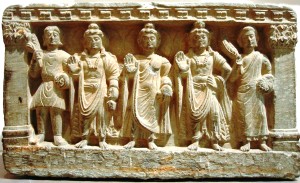 To attain nirvana is also to attain Buddhahood, awakening. But this is not attainment in any ordinary sense, because no acquisition and no motivation are involved. It is impossible to desire nirvana, or to intend to reach it, for anything desirable or conceivable as an object of action is, by definition, not nirvana. Nirvana can only arise unintentionally, spontaneously, when the impossibility of self-grasping has been thoroughly perceived. A Buddha, therefore, is a man of no rank. He is not above, like an angel; he is not below, like a demon. He does not appear anywhere in the six divisions of the Round, and it would be mistaken to think of him as superior to the angels, for the law of the Round is that what goes up must come down, and vice versa. He has transcended all dualities whatsoever, and thus it would mean nothing to him to think of himself as a superior person or a spiritual success.
To attain nirvana is also to attain Buddhahood, awakening. But this is not attainment in any ordinary sense, because no acquisition and no motivation are involved. It is impossible to desire nirvana, or to intend to reach it, for anything desirable or conceivable as an object of action is, by definition, not nirvana. Nirvana can only arise unintentionally, spontaneously, when the impossibility of self-grasping has been thoroughly perceived. A Buddha, therefore, is a man of no rank. He is not above, like an angel; he is not below, like a demon. He does not appear anywhere in the six divisions of the Round, and it would be mistaken to think of him as superior to the angels, for the law of the Round is that what goes up must come down, and vice versa. He has transcended all dualities whatsoever, and thus it would mean nothing to him to think of himself as a superior person or a spiritual success.
The Fourth Noble Truth describes the Eightfold Path of the Buddha’s Dharma, that is, the method or doctrine whereby self-frustration is brought to an end. Each section of the path has a name proceeded by the word samyak (Pali, samma), which has the meaning of “perfect” or “complete.” The first two sections have to do with thought; the following four have to do with action; and the final two have to do with contemplation or awareness. We therefore have:
- Samyak-drishti, or Complete view.
- Samyak-samkalpa, or Complete understanding.
- Samyak-vac, or Complete (i.e., truthful) speech.
- Samyak-karmanta, or Complete action.
- Samyagajiva, or Complete vocation.
- Samyak-vyayama, or Complete application.
- Samyak-smriti, or Complete recollectedness.
- Samyak-samadhi, or Complete contemplation.
Without discussing these sections in detail, it may simply be said that the first two are concerned with a proper understanding of the doctrine and of the human situation. In some ways the first section, “complete view,” contains all the others, since the method of Buddhism is above all the practice of clear awareness, of seeing the world yathabhutam – just as it is. Such awareness is a lively attention to one’s direct experience, to the world as immediately sensed, so as not to be misled by names and labels. Samyak-samadhi, the last section of the path, is the perfection of the first, signifying pure experience, pure awareness, wherein there is no longer the dualism of the knower and the known.
 The sections dealing with action are often misunderstood because they have a deceptive similarity to a “system of morals.” Buddhism does not share the Western view that there is a moral law, enjoin by God or by nature, which it is man’s duty to obey. The Buddha’s precepts of conduct – abstinence from taking life, taking what is not given, exploitation of the passions, lying, and intoxication – are voluntarily assumed rules of expediency, the intent of which to remove the hindrances to clarity of awareness. Failure to observe the precepts produces “bad karma,” not because karma is a law or moral retribution, but because all motivated and purposeful actions, whether conventionally good or bad, are karma in so far as they are directed to the grasping of life. Generally speaking, the conventionally “bad” actions are rather more grasping than the “good”. But the higher stages of Buddhist practice are as much concerned with disentanglement from “good karma” as from “bad.” Thus complete action is ultimately free, uncontrived, or spontaneous action, in exactly the same sense as the Taoist wu-wei.
The sections dealing with action are often misunderstood because they have a deceptive similarity to a “system of morals.” Buddhism does not share the Western view that there is a moral law, enjoin by God or by nature, which it is man’s duty to obey. The Buddha’s precepts of conduct – abstinence from taking life, taking what is not given, exploitation of the passions, lying, and intoxication – are voluntarily assumed rules of expediency, the intent of which to remove the hindrances to clarity of awareness. Failure to observe the precepts produces “bad karma,” not because karma is a law or moral retribution, but because all motivated and purposeful actions, whether conventionally good or bad, are karma in so far as they are directed to the grasping of life. Generally speaking, the conventionally “bad” actions are rather more grasping than the “good”. But the higher stages of Buddhist practice are as much concerned with disentanglement from “good karma” as from “bad.” Thus complete action is ultimately free, uncontrived, or spontaneous action, in exactly the same sense as the Taoist wu-wei.
Smriti, recollectedness, and Samadhi, contemplation, constitute the section dealing with the life of meditation, the inner, mental practice of the Buddha’s way. Complete recollectedness is a constant awareness or watching of one’s sensations, feelings, and thoughts – without purpose or comment. It is a total clarity and presence of mind, activity, actively passive, wherein events come and go like reflections in a mirror: nothing is reflected except what is.
In walking, standing, sitting, or lying down he understands that he is so doing, so that, however his body is engaged, he understands it just as it is….In setting out or returning, in looking before or around, in bending or stretching his arm…he acts with clear awareness.
Through such awareness it is see that the separation of the thinker from the thought, the knower from the known, the subject from the object, is purely abstract. There is not the mind on the one hand and its experiences on the other: there is just a process of experiencing in which there is nothing to be grasped, as an object, and no one, as a subject, to grasp it. Seen thus, the process of experiencing ceases to clutch at itself. Thought follows thought without interruption, that is, without any need to divide itself from itself, so as to become its own object.
“Where there is an object, there thought arises.” Is then the thought one thing, and the object another? No, what is the object, just that is the thought. If the object were one thing, and the thought another, then there would be a double state of thought. So the object itself is just thought. Can then thought review thought? No, thought cannot review thought. As the blade of the sword cannot cut itself, as a finger-tip cannot touch itself, so as a thought cannot see itself.
This nonduality of the mind, in which it is no longer divided against itself, is Samadhi, and because of the disappearance of that fruitless threshing around of the mind to grasp itself, Samadhi is a state of profound peace. This is not the stillness of total inactivity, for once the mind returns to its natural state, Samadhi persists at all times, in “walking, standing, sitting, and lying.” But, from the earliest times, Buddhism has specially emphasized the practice of recollectedness and contemplation while sitting. Most images of the Buddha show him in the posture of sitting meditation, in the particular attitude known as padmasana, the posture of the lotus, with the legs crossed and the feet resting, soles upward, upon the thighs.
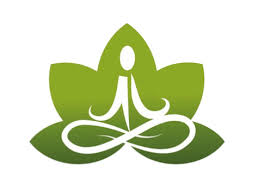 Sitting meditation is not, as is often supposed, a spiritual “exercise,” a practice followed for some ulterior object. From a Buddhist standpoint, it is simply the proper way to sit, and it seems perfectly natural to remain sitting so long as there is nothing else to be done, and so long as one is not consumed with nervous agitation. To the restless temperament of West, sitting meditation may seem to be an unpleasant discipline, because we do not seem to be able to sit “just to sit” without qualms of conscience, without feeling that we ought to be doing something more important to justify our existence. To propitiate this restless conscience, sitting meditation must therefore be regarded as an exercise, a discipline with an ulterior motive. Yet at that very point it ceases to be meditation (dhyana) in the Buddhist sense, for where there is purpose, where there is seeking and grasping for results, there is no dhyana.
Sitting meditation is not, as is often supposed, a spiritual “exercise,” a practice followed for some ulterior object. From a Buddhist standpoint, it is simply the proper way to sit, and it seems perfectly natural to remain sitting so long as there is nothing else to be done, and so long as one is not consumed with nervous agitation. To the restless temperament of West, sitting meditation may seem to be an unpleasant discipline, because we do not seem to be able to sit “just to sit” without qualms of conscience, without feeling that we ought to be doing something more important to justify our existence. To propitiate this restless conscience, sitting meditation must therefore be regarded as an exercise, a discipline with an ulterior motive. Yet at that very point it ceases to be meditation (dhyana) in the Buddhist sense, for where there is purpose, where there is seeking and grasping for results, there is no dhyana.
This word dhyana (Pali, jhana) is original Sanskrit form of the Chinese ch’an and the Japanese zen, and thus its meaning is of central importance for an understanding of Zen Buddhism. “Meditation” in the common sense of “taking things over” or “musing” is a most misleading translation. But such alternatives as “trance” or “absorption” are even worse, since they suggest states of hypnotic fascination. The best solution seems to be to have dhyana untranslated and add it to the English language as we have added Nirvana and Tao.
As used in Buddhism, the term dhyana comprises both recollectedness (smriti) and samadhi, and can best be described as the state of unified or one-pointed awareness. On the one hand, it is one-pointed in the sense of being focused on the present, since to clear awareness there is neither past nor future, but just this one moment (ekaksana) which Western mystics have called the Eternal Now. On the other hand, it is one-pointed in the sense of being a state of consciousness without differentiation of the knower, the knowing, and the known.
A Tathagata (i.e., a Buddha) is a seer of what is to be seen, but he is not mindful (na mannati, or does not conceive) of the seen, the unseen, the seeable, or the seer. So too with the heard, the sensed, and the known: he does not think of them in these categories.
The difficulty of appreciating what dhyana means is that the structure of our language does not permit us to use a transitive verb without a subject and a predicate. When there is “knowing,” grammatical convention requires that there must be someone who knows and something which is known. We are so accustomed to this convention in speaking and thinking that we fail to recognize that it is simply a convention, and that it does not necessarily correspond to the actual experience of knowing. Thus when we say, “A light flashed,” it is somewhat easier to see through the grammatical convention and to realize that the flashing is the light. But dhyana has the mental state of the liberated or awakened man is naturally free from the confusion of conventional entities with reality. Our intellectual discomfort in trying to conceive knowing without a distinct “someone” who knows and a distinct “something” which is known, is like the discomfort of arriving at a formal dinner in pajamas. The error is conventional, not existential.
Once again, therefore we see how convention, how the maya of measurement and description, populates the world with those ghosts which we call entities and things. So hypnotic, so persuasive is the power of convention that we begin to feel these ghosts as realities, and make of them our loves, our ideals, our prized possessions. But the anxiety-laden problem of what will happen to me when I die is, after all, like asking what happens to my fist when I open my hand, or where my lap goes when I stand up. Perhaps, then, we are now able to understand the celebrated summary of the Buddha’s doctrine given in the Visuddhimagga:
Suffering alone exists, none who suffer;
The need there is, but no doer thereof;
Nirvana is, but no one seeking it;
The Path there is, but none who travel it.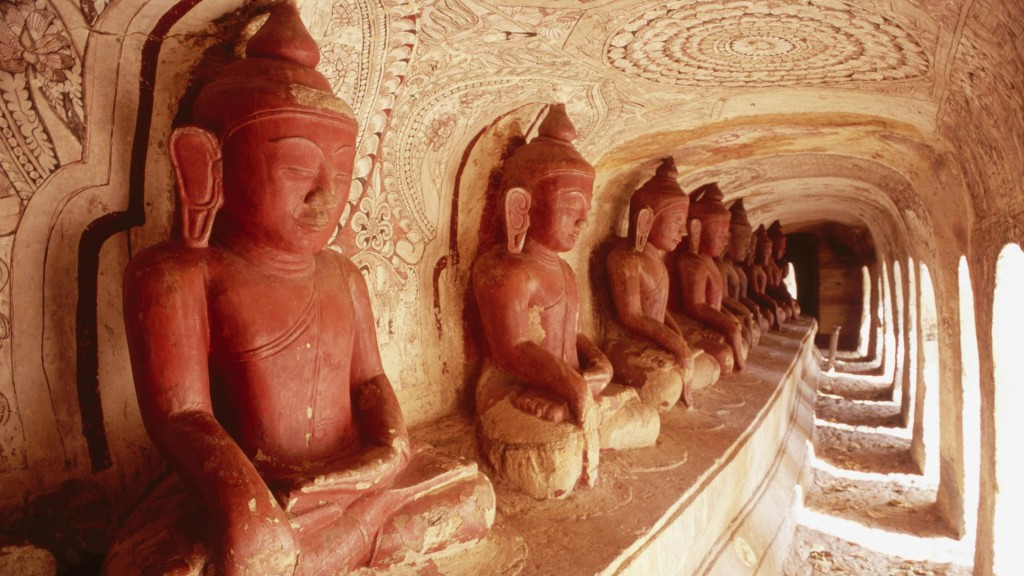
Source: “The Way of Zen”, By: Alan W. Watts